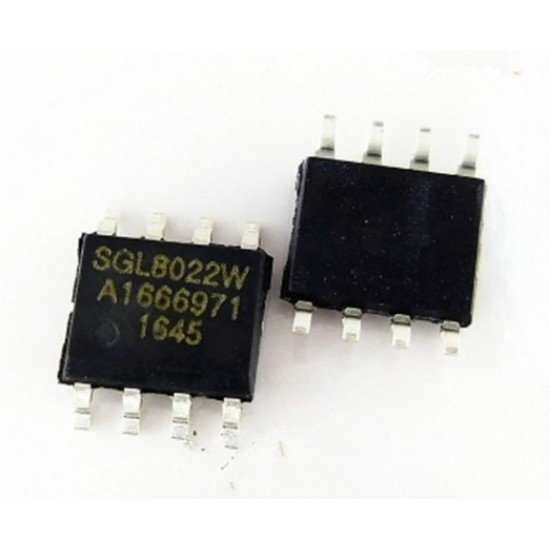Understanding the Role of a Touch IC
Before diving into the selection process, it’s important to understand what a touch IC actually does:
- Senses touch input on a capacitive or resistive panel.
- Processes raw analog signals into clean, filtered digital data.
- Calculates precise coordinates (and possibly pressure data).
- Communicates with the host processor via I²C, SPI, or USB.
- Supports gestures like pinch, zoom, or swipe.
From an engineering standpoint, it is essentially a specialized signal processor optimized for touch input detection.
Step 1: Define Your Touch Technology
The first selection filter is the touchscreen type:
- 容量式タッチ: Most common for consumer devices; supports multi-touch, high sensitivity, and better durability.
- Resistive Touch: Ideal for industrial and harsh environments; works with gloves, stylus, or any object.
- Projected Capacitive (PCAP): Offers higher resolution, water/glove touch, and improved noise immunity.
The choice of panel technology directly determines the type of touch IC you can use.
Step 2: Match the IC to Screen Size and Resolution
Touch IC performance must align with the active area と IPS pixel density of your display:
- Small displays (under 5″) can work with lower-power ICs.
- Large-format displays require higher scanning frequencies to maintain responsiveness.
- High-resolution panels may need more advanced algorithms for accurate coordinate mapping.
Ignoring this can lead to lag, inaccurate touch points, or unstable gesture recognition.
Step 3: Consider the Operating Environment
Engineers must account for environmental challenges:
- Outdoor Devices: Need ICs with sunlight readability adjustments and wide operating temperatures.
- Medical Applications: Require EMI/EMC compliance and glove operation.
- Industrial Panels: Need dust, moisture, and chemical resistance, often with conformal coating support.
A chip designed for smartphones may fail quickly in a dusty factory control room.
Step 4: Evaluate Electrical Interface Compatibility
Most touch ICs communicate through:
- I²C – Common in embedded systems; good for moderate-speed communication.
- SPI(Serial Peripheral Interface) – Faster and more noise-resistant; often used in industrial applications.
- USB – Common for PC peripherals and some automotive infotainment systems.
Ensure the IC’s interface matches your host MCU or SoC capabilities.
Step 5: Review Key Performance Metrics
When comparing datasheets, engineers should focus on:
- Touch Report Rate (Hz) – Higher rates mean smoother tracking.
- Latency – Critical for gaming, stylus input, and interactive kiosks.
- 非常に低い – Essential for battery-powered devices.
- Noise Immunity – Especially important if display and touch signals interfere.
- Firmware Upgradability – Allows for bug fixes and new features without hardware changes.
Step 6: Assess Multi-Touch and Gesture Capabilities
現代のユーザーインターフェースはジェスチャーに大きく依存しています。一部のタッチICは以下をサポートします:
- マルチタッチトラッキング (10点以上まで対応可能)。
- ジェスチャーライブラリ スワイプ、ズーム、回転などの一般的な操作に対応。
- カスタムジェスチャープログラミング 専門アプリケーション向け。
例えば、自動車用制御パネルでは誤作動防止のため独自のスワイプパターンが必要となる場合があります。
ステップ7: 規制要件と信頼性要件の確認
対象市場に応じて:
- 自動車グレードIC はAEC-Q100規格を満たします。
- 医療機器 ではISO 13485準拠と高いESD保護が必要となる場合があります。
- 民生用電子機器 はコストが重視されますが、RoHS準拠は依然必要です。
長期供給性も重要です - ライフサイクル終了間近のICは避けてください。
ステップ8: 統合性と開発サポートの検討
優れたエンジニアリングサポートは数週間分の開発時間を節約できます。メーカーが以下を提供するか確認してください:
- リファレンスデザイン 迅速な試作のため。
- ドライバライブラリ 希望のMCUまたはOS向け。
- チューニングソフトウェア 感度とノイズフィルタリング用。
- 評価キット 生産投入前のテスト用。
ステップ9: 予算と性能のバランス
実際のプロジェクトでは予算制約が重要です。
エンジニアは以下をバランスさせる必要があります:
- 性能要件 (精度、レイテンシ、耐久性)
- 生産コスト (単価、ライセンス料)
- スケーラビリティ (大量生産時の供給性)
最適化されたファームウェアを搭載した中級ICが、特定用途ではハイエンドICを上回る性能を発揮する場合があります。
使用例
- スマートフォンディスプレイ – 高感度、マルチタッチ、薄型設計、低消費電力。
- 工場用HMI – 手袋タッチ対応、高EMI耐性、広い温度範囲対応。
- 自動車用ディスプレイ – AEC-Q100認証、太陽光下視認性、防水機能。
- 医療用モニター – 高ESD耐性、手袋/スタイラス対応、滅菌対応表面。
を要求すべきである
エンジニアの視点では、適切なタッチICチップの選択は 技術的なバランス調整 です — 性能、環境耐性、インターフェース互換性、コストを統合する作業となります。
構造化された選定プロセス(タッチ技術の定義から開始し、IC機能と表示要件の適合、環境課題の考慮、長期的なサポートの確保まで)に従うことで、 信頼性が高く応答性に優れたユーザーフレンドリーなタッチ体験 を製品にもたらすチップを選択できます。

